|
As
the judge remarked about my life. ‘Its like paint ... parts
are opaque, parts transparent, and parts somewhere in between, according
to how much light is able to pass through the tiny particles of your credibility.’
But he was right about the paint. It can be opaque, transparent, and somewhere
in between, according to how much light is able to pass throught the tiny
particles of pigment. Transparent pigments are like tiny colored crystals,
whereas opaque pigments are like little colored (or white) rocks through
which light does not pass.
Example... Broken china or coal.(opaque) rubies, crushed colored glass.(transparent)
Opaque paint reflects light directly from the surface; transparent paint
allows light to penetrate beneath the surface,
Opaque
paints (siennas, umbers, whites, ochres, and most earth colors generally)
give a more convincing illusion of distance, especially when juxtaposed
with a foreground which includes transparent passages for the darker darks.
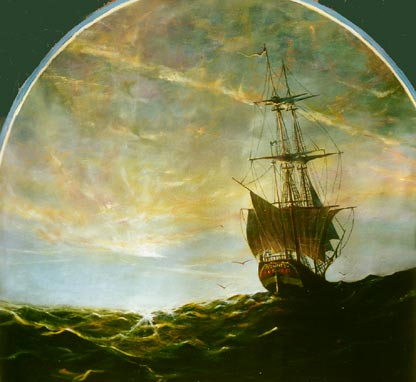
The
student might think that in this painting (ABOVE) I used transparent paint
for the sky and opaque paint for the foreground... the sea. The reverse
is the case. I built up many passages of transparent glazes to create the
depth of the foreground waves. The sky is done in s few earth color scumbles
(great word - sounds like something left after a very high tide or
an epithet used to describe the neighbour’s chidren) anyway the 'scumbles'
created the milky distance look I desired in the sky. With this understanding,
it becomes apparent that transparent paint allows for the deepest darks,
because the light does not bounce off the surface, but penetrates deeper
before being reflected out to our eyes.
A
scumble is a thin application of a paint whose basic nature is to be
opaque but which is rendered semiopaque by the physical thinness of the
application (scumble) or by the addition of a transparent medium. Its thinness
allows the background paint to contribute to the painting. The optical
effect of transparent paints or glazes is to retain clarity. The optical
effect of opaque paints or glazes is to lose clarity. Scumbling is the
method of applying thin layers of opaque paint.
| How
is it done? In the example right I had all but finished the painting but
I wanted to put in some beams of sunlight. I used a dry bristle brush with
very little paint and dragged it across a surface that was itself dry.
The idea is not to mix (wet in wet) with the underlying paint but to separate
the particles of pigment as if they were floating in the sky. This is scumbling. |
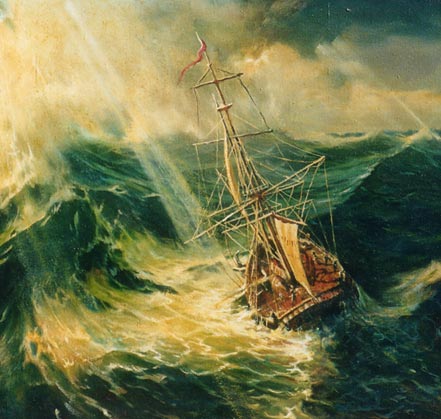 |
White,
thinned with a little medium is painted over a grey of mid-value to create
the pallid blue unhealthy look I wanted in the woman's body here (see below).
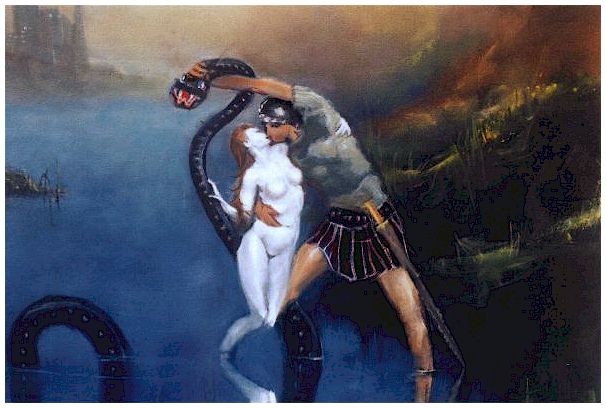
So
the uses of scumbling are: To indicate atmospheric haze.
To give an
illusion of greater textural softness in fabric.
To create the soft complexions
of young women or children in portraiture.
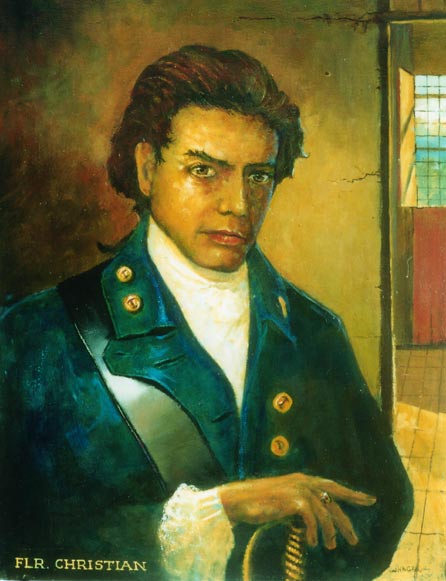 |
For
the the gauze cuffs and shirtfront in this portrait I used extra thin glazes
of opaque white over darker passages underneath - until I got the value I
wanted. I used a bristle brush as I wanted a cotton gauze; if I desired
a silk then I would have most likely finished with a sable. |
The
effect on the illusion of atmospheric perspective (below). Transparent passages
exhibit greater clarity, an optical sensation peculiar to nearby planes
where the least amount of atmosphere is present between our eyes and the
plane in question. More distant planes are viewed through more atmosphere,
the density of which alters the colors and values to a greater extent the
greater the distance involved, reducing clarity.
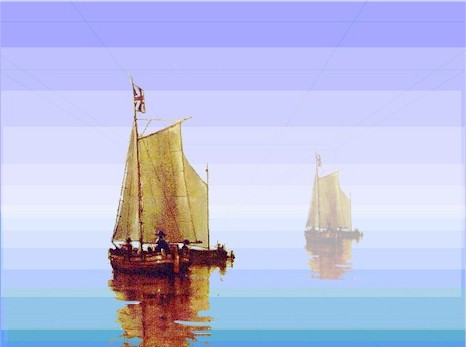
Example
.... the boat we used in our lesson on aerial perspective.
Here we could use either of three
methods to apply the opaque over-paint. We could charge up a large brush
and work from the horizon outwards, the mixture thinning as we neared the
top or bottom. Alternatively we could just apply it in thin controlled
layers waiting for the underneath one to completely dry, trap it with a
glaze and then apply the next scumble etc. The third method involves
mixing the paint with a fast drying medium that would thin out the pigment
particles and apply successive coats.
|